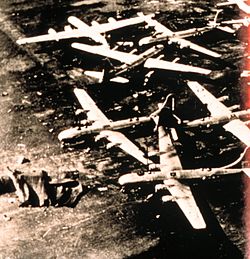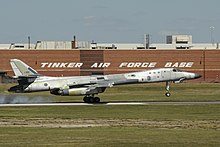
Will Rogers World Airport, also known as Will Rogers Airport or simply Will Rogers, is a passenger airport located in Oklahoma City, Oklahoma, United States, about 6 miles (10 km) southwest of the city's downtown area. It is a civil-military airport on 8,081 acres of land. Although the official IATA and ICAO airport codes for Will Rogers World Airport are OKC and KOKC, it is common practice to refer to it as "WRWA" or "Will Rogers".

McConnell Air Force Base is a United States Air Force base located four miles (6 km) southeast of the central business district of Wichita, a city in Sedgwick County, Kansas, United States. The airbase was named in honor of the brothers Fred and Thomas McConnell of Wichita, who had both been Air Force pilots and veterans of World War II. It is the home of Air Mobility Command's 22nd Air Refueling Wing, Air Force Reserve Command's 931st Air Refueling Wing, and the Kansas Air National Guard's 184th Wing.

The Air Force Materiel Command (AFMC) is a Major Command (MAJCOM) of the United States Air Force (USAF). AFMC was created on July 1, 1992, through the amalgamation of the former Air Force Logistics Command (AFLC) and the former Air Force Systems Command (AFSC).

Air Materiel Command (AMC) was a United States Army Air Forces and United States Air Force command. Its headquarters was located at Wright-Patterson Air Force Base, Ohio. In 1961, the command was redesignated the Air Force Logistics Command with some of its functions transferred to the new Air Force Systems Command.

The 2nd Bomb Wing is a United States Air Force unit assigned to the Air Force Global Strike Command and the Eighth Air Force. It is stationed at Barksdale Air Force Base, Louisiana. The wing is also the host unit at Barksdale. The wing was assigned to the Air Force Global Strike Command in February 2010 as part of the reassignment of Eighth Air Force.

Rodney J. McKinley is a retired airman of the United States Air Force who served as the 15th Chief Master Sergeant of the Air Force from 2006 to 2009.

The 416th Air Expeditionary Wing (AEW) is a provisional unit assigned to the Air Combat Command of the United States Air Force to activate or inactivate as needed.

The 136th Airlift Wing is a unit of the Texas Air National Guard, stationed at Naval Air Station Joint Reserve Base Fort Worth, Fort Worth, Texas. If activated to federal service, the wing is gained by the United States Air Force's Air Mobility Command (AMC).

The 76th Maintenance Wing is a wing of the United States Air Force based out of Tinker Air Force Base, Oklahoma.
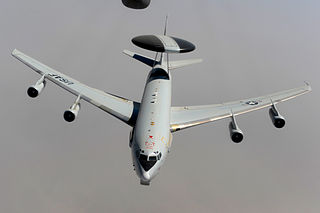
The 552d Air Control Wing is an operational wing of the United States Air Force. It has been based at Tinker Air Force Base, Oklahoma, since July 1976, operating the Boeing E-3 Sentry. It includes the 552d Operations Group, 552d Maintenance Group, 552d Training Group, and 552d Air Control Group.
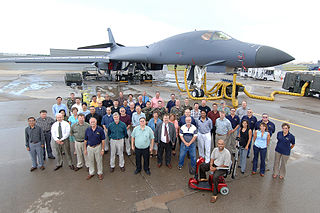
The 327th Aircraft Sustainment Wing is an inactive wing of the United States Air Force last based at Tinker Air Force Base, Oklahoma. It was last assigned to Air Force Materiel Command's Oklahoma City Air Logistics Center.

The 507th Air Refueling Wing is a reserve component flying unit of the United States Air Force. It is assigned to Fourth Air Force of Air Force Reserve Command, stationed at Tinker Air Force Base, Oklahoma with elements at Altus Air Force Base, Oklahoma. The 507th ARW executes air refueling, airlift, and training in support of Air Mobility Command and U.S. Strategic Command's national emergency war order requirements. The wing employs approximately 1,100 men and women made up of a mix of Traditional Reservists, full-time Air Reserve Technicians, AGRs and Air Force civilians. The wing also provides mission support for all other reserve units stationed at Tinker AFB.
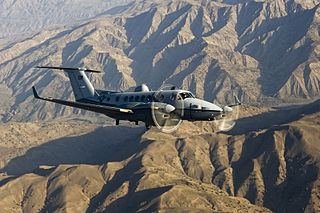
The 137th Special Operations Wing is a unit of the Oklahoma Air National Guard located at Will Rogers Air National Guard Base, Oklahoma. If activated to federal service, the wing is gained by Air Force Special Operations Command. During World War II, its predecessor, the 404th Fighter Group, flying Republic P-47 Thunderbolts, provided close air support to troops following the Operation Overlord, the Normandy landing until the close of the war. The wing is entitled to the honors won by the group by temporary bestowal.
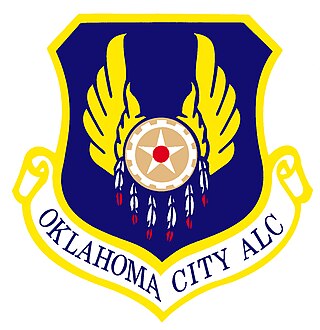
The Oklahoma City Air Logistics Complex (OC-ALC) Tinker Air Force Base, Oklahoma is one of the largest units in the Air Force Materiel Command. The complex performs programmed depot maintenance on the C/KC-135, B-1B, B-52 and E-3 aircraft; expanded phase maintenance on the Navy E-6 aircraft; and maintenance, repair and overhaul of F100, F101, F108, F110, F117, F118, F119, F135, and TF33 engines for the Air Force, Air Force Reserve, Air National Guard, Navy and foreign military sales. Additionally, the complex is responsible for the maintenance, repair and overhaul of a myriad of Air Force and Navy airborne accessory components, and the development and sustainment of a diverse portfolio of operational flight programs, test program sets, automatic test equipment, and industrial automation software.
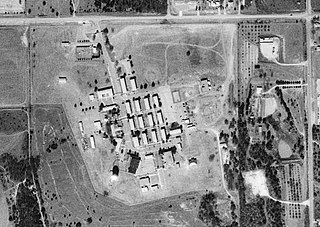
Oklahoma City Air Force Station is a closed Cold War United States Air Force air defense and communications-electronics headquarters and radar station. It was located 10 miles (16 km) east-southeast of Oklahoma City, Oklahoma, just to the southeast of Tinker Air Force Base. It ceased to be a separate Air Force installation on 1 October 1983, when it merged with Tinker.

Judith Ann Fedder is a retired United States Air Force lieutenant general who served as the Deputy Chief of Staff for Logistics, Installations and Mission Support, Headquarters United States Air Force, The Pentagon, Washington, D.C. Fedder was responsible to the Chief of Staff for leadership, management and integration of Air Force logistics readiness, aircraft and missile maintenance, civil engineering and security forces, as well as setting policy and preparing budget estimates that reflect enhancements to productivity, combat readiness and quality of life for Air Force people.

Strategic Communications Wing 1 is a nuclear command and control wing of the United States Navy. Its TACAMO mission provides airborne communications links to nuclear missile units of United States Strategic Command. It is located at Tinker Air Force Base, Oklahoma.

Fleet Air Reconnaissance Squadron 4 (VQ-4), nicknamed the Shadows, is a naval aviation squadron of the United States Navy based at Tinker Air Force Base, Oklahoma. The squadron flies the Boeing E-6B Mercury airborne command post and communications relay aircraft. It is part of the U.S. Navy's TACAMO community, whose mission is to enable the President of the United States and the Secretary of Defense to directly communicate with U.S. submarines, bombers, and missile silos during a nuclear war.

Travis Air Force Base is a United States Air Force base under the operational control of Air Mobility Command (AMC), located three miles east of the central business district of the city of Fairfield, in Solano County, California.

Robins Air Force Base is a major United States Air Force installation located in Houston County, Georgia, United States. The base is located just east of the city of Warner Robins, 18 mi (29 km) south-southeast of Macon and approximately 100 mi (160 km) south-southeast of Atlanta, Georgia. The base is named in honor of Brig Gen Augustine Warner Robins, the Air Force's "father of logistics". The base is the single largest industrial complex in Georgia, employing a workforce of over 25,584 civilian, contractor, and military members.







